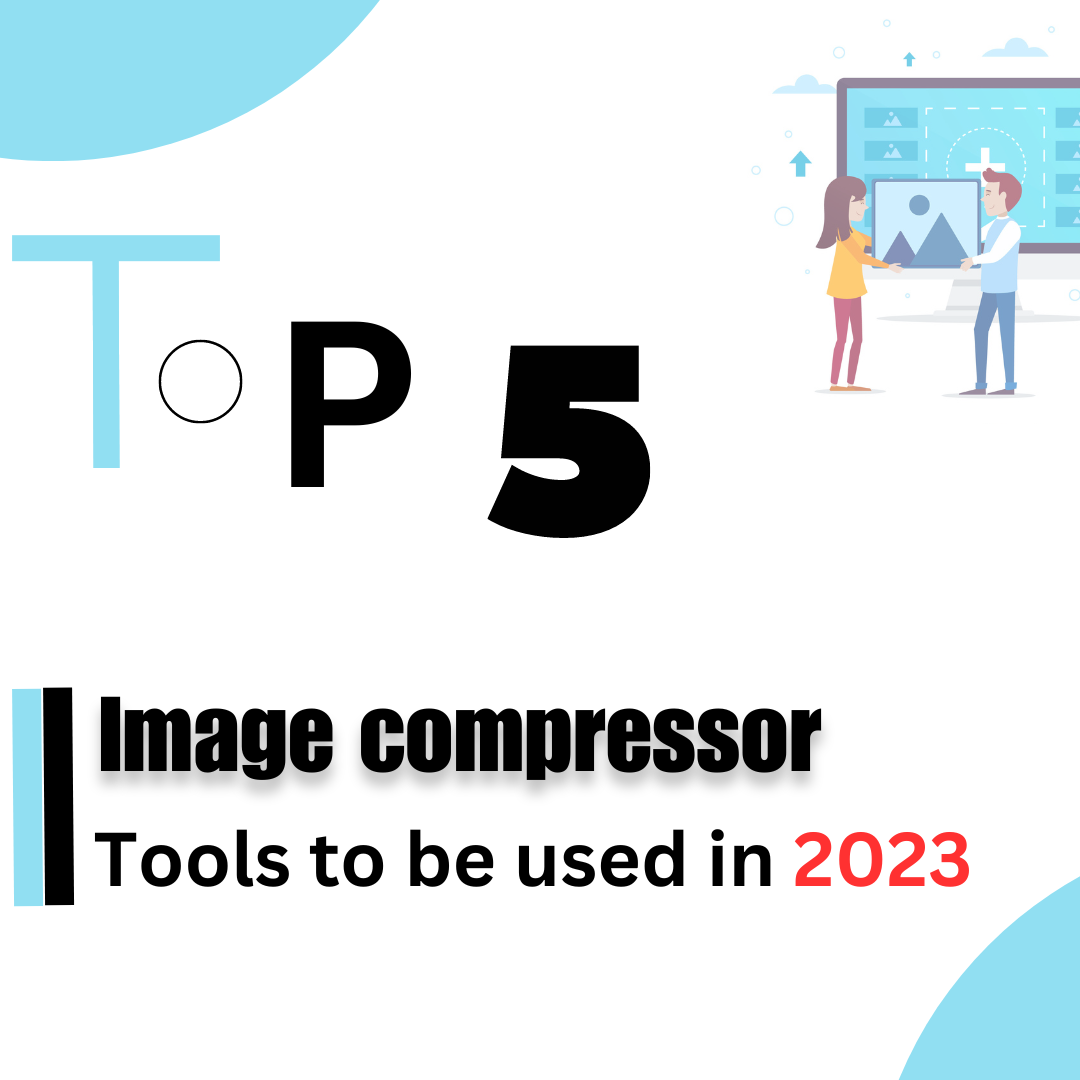Are images taking up too much space on your website or in your system? When the amount of images on your system grows and deletion is not an option, image compression comes to the rescue. Hence the image compressor plays a vital role in this process. The expanded storage space on the system is also running out and cannot keep up with the growing number of high-quality photographs. Thus, compressing is a good method for storing all of your favorite photographs while still making room for other files.
Image compression plays an important role in SEO for image optimization. Compressing a file is perhaps the simplest yet most important aspect of image optimization because it directly ties to the website’s loading time. There are several tools and programs available for compressing photos. In this article learn more about some of the most popular image compressors.

So, let’s get into the journey to know about some of the image compression tools or software:
1. Iamvector Image Compression Tool:
The Iamvector image compression tool significantly decreases image file sizes by up to 70% while keeping acceptable image quality. This function is very valuable for individuals and organizations trying to optimize storage space and increase website performance.
One significant feature of Iamvector is its capacity to handle huge picture files, allowing users to compress files up to 50MB in size. This distinguishes it from other programs and makes it a practical alternative for individuals who work with large image files. The effective compression method not only speeds workflows but also allows for easier image sharing and transmission without losing image quality.
It ensures that the original image format is maintained during the compression process. Whether the image is in JPEG, PNG, GIF, or any other standard format, Iamvector respects the format, making it easy to integrate the compressed images easily into existing workflows and maintain consistency across digital platforms.
2. Adobe Photoshop:
Adobe Photoshop is the best photo-compressing software available. Cropping, retouching, combining, and compressing photographs is a breeze using the world’s best imaging and graphic design tools.
Photoshop is professional and adds new aspects to the art of photography. So you can imagine how thoroughly it covers fundamentals like picture reduction.
One of its most intriguing features is the ability to work with an infinite number of layers and masks. Furthermore, you’re likely to enjoy its user interface. You can choose from many workspace layouts or design your own custom layout of panels and windows.

3. Tiny PNG:
TinyPNG is the greatest tool for compressing images on the fly. It’s perfect for individuals who merely want to access a website and run their photographs via a program quickly. TinyPNG couldn’t be simpler to use. All you have to do is access the site and drag and drop your WebP, JPEG, or PNG files into the upload box.
TinyPNG will compress it in a few sessions and provide a download link that you may use to save the compressed version to your PC. When I tried it with a handful of photographs, it always decreased the file size by at least 60%. Furthermore, we found no change in quality between the compressed and uncompressed versions.
This is most likely owing to TinyPNG’s intelligent lossy compression approach. It removes extraneous metadata from the image and carefully mixes comparable colors using a process called quantization, the results of which are practically unnoticeable.
4. Imagify:
Imagify is yet another wonderful image-optimizing platform. You can use it to compress images directly in your CMS or via the online interface. It supports all of the most popular image formats, including JPG, PNG, GIF, and PDF.
Imagify allows you to customize your compression level. There are three settings to choose from: Normal, Aggressive, and Ultra. The more aggressive the setting, the greater the file size reduction. The less aggressive the mode, the higher the quality. It will also display before/after compression statistics in your dashboard so you can keep track of your improvements.
Aside from compression, you may also modify the size of your images through the web interface or through your CMS. Simply enter the dimensions in pixels or as a percentage number, and Imagify will handle the rest.
5. Optimizilla:
Optimizilla is an online image optimizer that employs an intelligent lossy compression algorithm to reduce image file sizes while maintaining image quality. To begin, open the program in your browser and upload some photographs. You can compress up to 20 GIFs, JPEGs, and PNG images at once, and you can mix and match multiple formats in the same batch.
Optimizilla’s system will then intelligently analyze your photographs and compress them to the optimal size in order to balance quality and file size. However, it will then show you a side-by-side glimpse of how the compressed image compares to the uncompressed version, as well as the new file size. If you’re not satisfied with the current amount of compression, you can adjust it by swiping the scale, and the preview will update in real-time.
When you’ve finished tweaking and discovered your ideal compression level, you can download all of your compressed photographs in a clean and tidy ZIP file, or you can download each one separately.
Conclusion:
Compressing your images using the right tool is very important to ensure that file size is reduced without considerable quality loss, with ease, and with support for added features. Now you know how vital it is to compress images using the right tools. Well-optimized & resized images reflect a professional brand image and improve customer trust. It ultimately helps improve your brand position in the search engine result pages. Image compressor is an easy, faster & appropriate tool for compressing images due to its quality-retaining, rich functionality, and user-friendly UI.